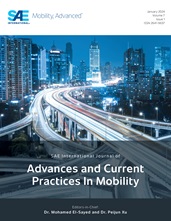Designing an efficient vehicle coolant system depends on meeting target coolant flow rate to different components with minimum energy consumption by coolant pump. The flow resistance across different components and hoses dictates the flow supplied to that branch which can affect the effectiveness of the coolant system. Hydraulic tests are conducted to understand the system design for component flow delivery and pressure drops and assess necessary changes to better distribute the coolant flow from the pump. The current study highlights the ability of a complete 3D Computational Fluid Dynamics (CFD) simulation to effectively mimic a hydraulic test. The coolant circuit modeled in this simulation consists of an engine water-jacket, a thermostat valve, bypass valve, a coolant pump, a radiator, and flow path to certain auxiliary components like turbo charger, rear transmission oil cooler etc. A commercial CFD software, Simerics-MP+®, is used to simulate the hydraulic test for two different positions of the poppet valve of the thermostat, viz. a closed position and an 50% opening, at different speeds of the engine. In the CFD model, the complete geometrical details of water-jacket, thermostat, and pump are considered. The remaining components are approximated as pipes with flow resistance models to account for flow and pressure drop at different engine speeds. Firstly, the standalone pump performance is validated in the operating regime of interest, followed by the calibration of the resistance models for the simplified components. At the end, complete system level 3D simulations are conducted and validated for the above mentioned two positions of the poppet valve. The flow distribution and pressure drop across different components show good comparison with the hydraulic test data within 7% error band.
